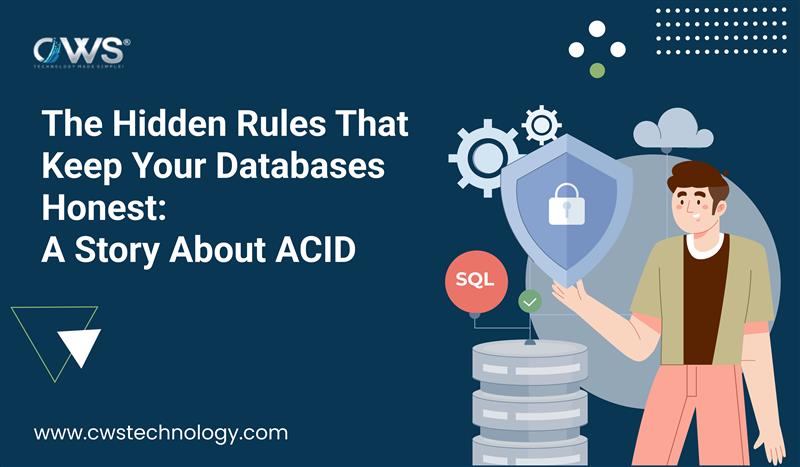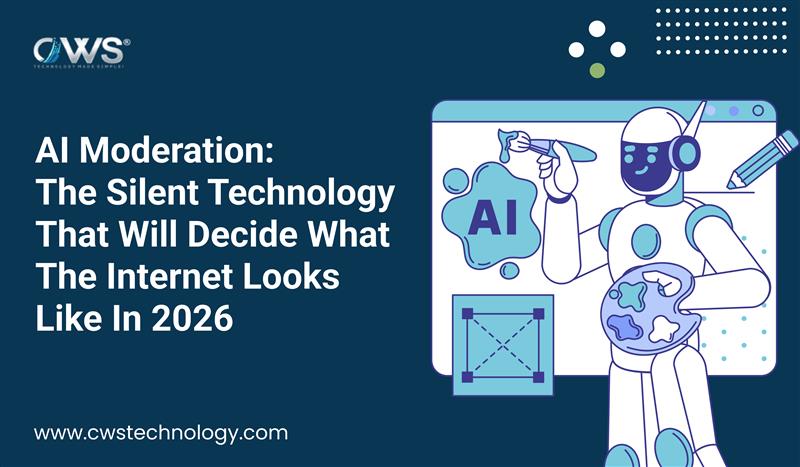When you send money to a friend, order a product online, or book a flight ticket, you rarely think about what happens behind the scenes in the system that makes it all possible. Yet, every action you take triggers a set of hidden rules that ensure everything runs smoothly, fairly, and reliably. These rules are quietly shaping the digital trust we often take for granted.
In the world of databases, these invisible guardians are called ACID properties. They are not flashy features you notice on a screen but rather a framework that ensures transactions behave exactly as they should. To bring them to life, let’s tell a few stories where these principles reveal themselves in action.
Imagine Sending Money Without Rules
Picture this: you transfer $100 from your account to a friend. Without these hidden rules, your bank’s system might deduct the money from your account but fail to credit your friend’s account. Or worse, it might credit your friend twice while still deducting from you once.
This chaos doesn’t happen because databases follow the discipline of ACID. It’s the silent contract that guarantees your financial world doesn’t spiral into confusion.
Let’s unpack these rules through relatable lenses.
Rule One: Atomicity – All or Nothing
Atomicity is like making a promise you must either keep entirely or not make at all. When you transfer money, the transaction has two steps: deduct from your account and add to your friend’s. Atomicity ensures that both happen together—or not at all.
Think of it like sending a gift box with two items inside. If the delivery service loses one item, the whole package is considered undelivered. You’d rather get nothing than receive only half the gift. That’s exactly how databases behave: incomplete transactions don’t exist.
Rule Two: Consistency – Trusting the Rules
Consistency ensures that after every transaction, the database remains in a valid, trustworthy state.
For example, if your bank account starts at $500 and you transfer $100, the database must end with two balances that add up to $500: your $400 and your friend’s $100. If the numbers don’t add up, something is broken.
It’s like playing a board game where every move must follow the rules. If a player suddenly decides to skip five turns or jump to the finish line, the game loses its meaning. Databases, just like games, only make sense when the rules are respected.
Rule Three: Isolation – Parallel Worlds That Don’t Collide
Now imagine you and another friend both transfer money to the same account at the exact same time. Without isolation, the system might get confused: one transaction could overwrite the other, or the final balance might be incorrect.
Isolation ensures that each transaction runs in its own bubble, as if no other transactions exist at the same moment. Only once a transaction is complete does it merge safely into the real database.
Think of two chefs working in a kitchen. If they share the same counter without boundaries, ingredients get mixed up, and recipes fail. Isolation gives each chef their own workspace until the dish is complete.
Rule Four: Durability – Once Done, Always Done
Durability is about memory that never forgets. Once a transaction is confirmed, it stays recorded—even if the system crashes the next second.
Imagine buying a plane ticket online. You wouldn’t want the confirmation email to disappear just because the airline’s system went offline after your purchase. Durability ensures your ticket exists and is recoverable, no matter what.
It’s like carving something into stone rather than writing it on sand. Once carved, it stays.
Why These Rules Still Matter in a Cloud-Driven World
You might wonder: do we really need such strict rules when technology is evolving so fast? The answer is yes.
From traditional banking systems to modern blockchain networks and global e-commerce platforms, these rules keep digital systems resilient and trustworthy. Without them, companies would face data corruption, user mistrust, and financial losses.
Even in cloud environments, where scalability and flexibility are key, systems still rely on these foundational principles. They might package or optimize them differently, but the underlying trust mechanism remains the same.
Making ACID More Human
When you strip away the jargon, ACID isn’t about databases at all—it’s about trust, fairness, and reliability in a digital world.
- Atomicity reflects integrity: you either keep your promise or not make it.
- Consistency stands for fairness: the rules are followed, no shortcuts allowed.
- Isolation ensures respect: each action gets its space without interference.
- Durability means accountability: once something is done, it remains done.
These qualities are not just technical—they’re human values we instinctively seek in our interactions with people and systems alike.
Wrapping It Up
Every time you swipe your card, book a ticket, or send a message, ACID is at work in the background, making sure your digital world doesn’t collapse into chaos. It’s the quiet guardian of trust in a hyper-connected age.
So, the next time you wonder how your money, data, or digital life stays intact, remember the hidden rules that quietly keep the system honest. They don’t make headlines, but they make everything possible.








